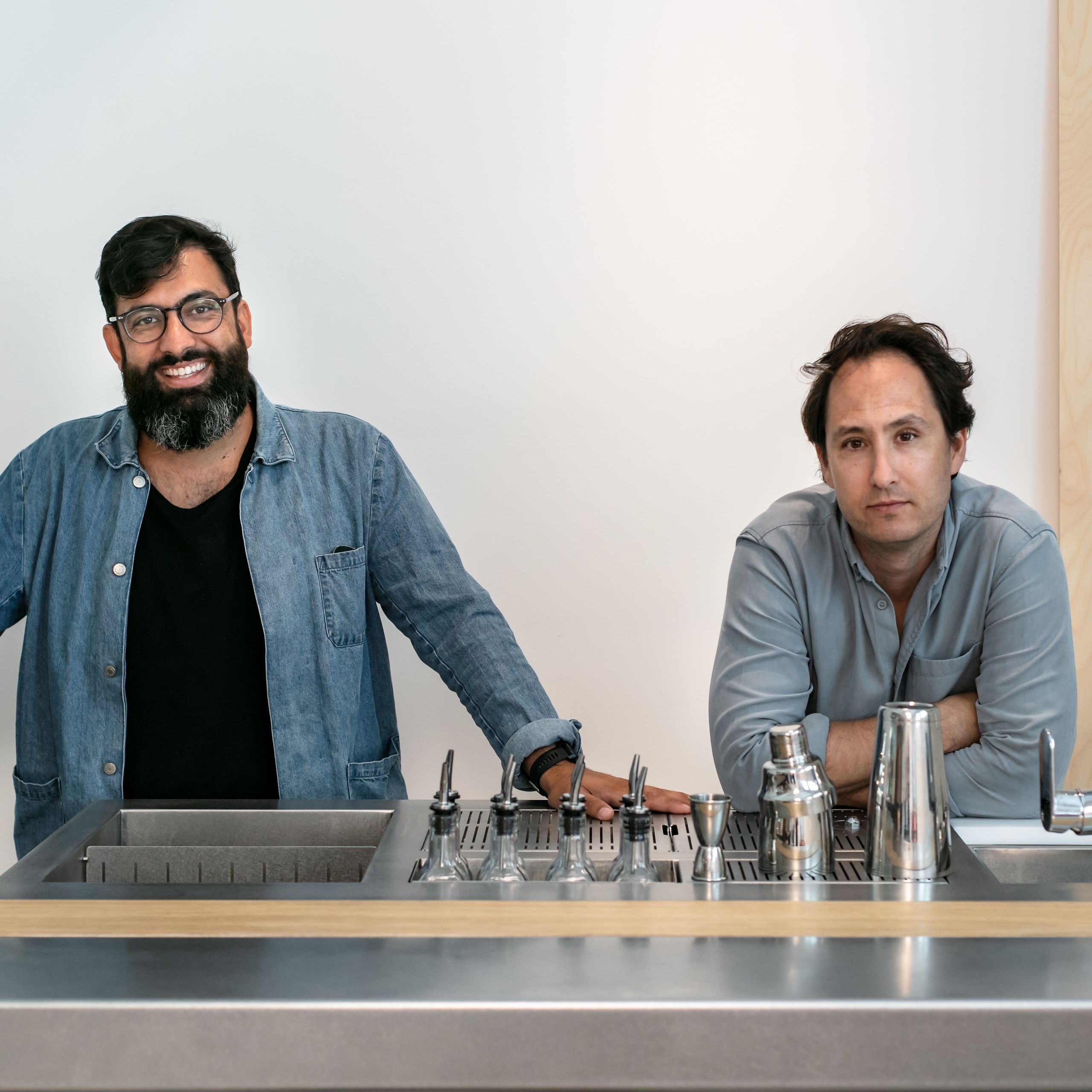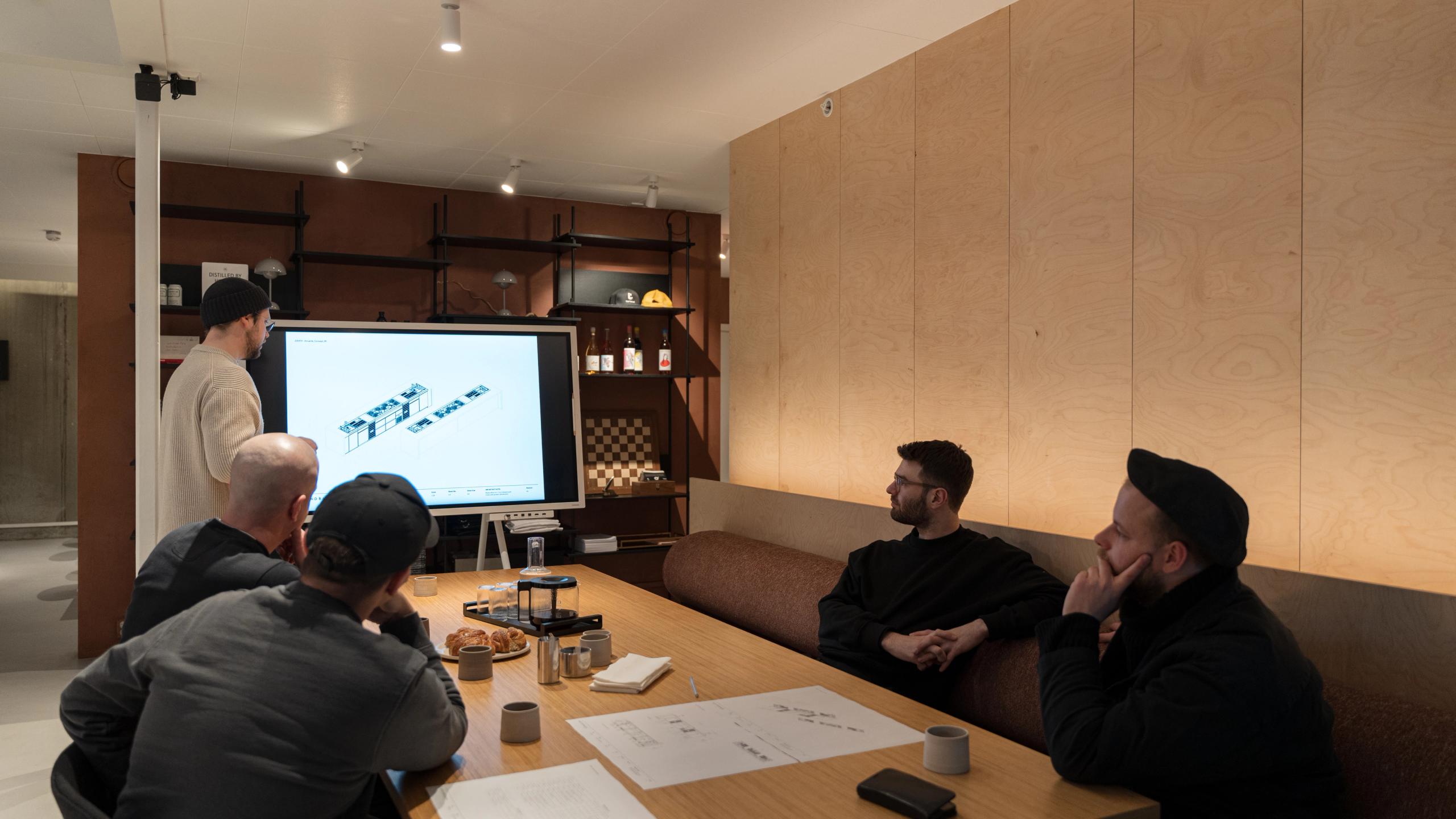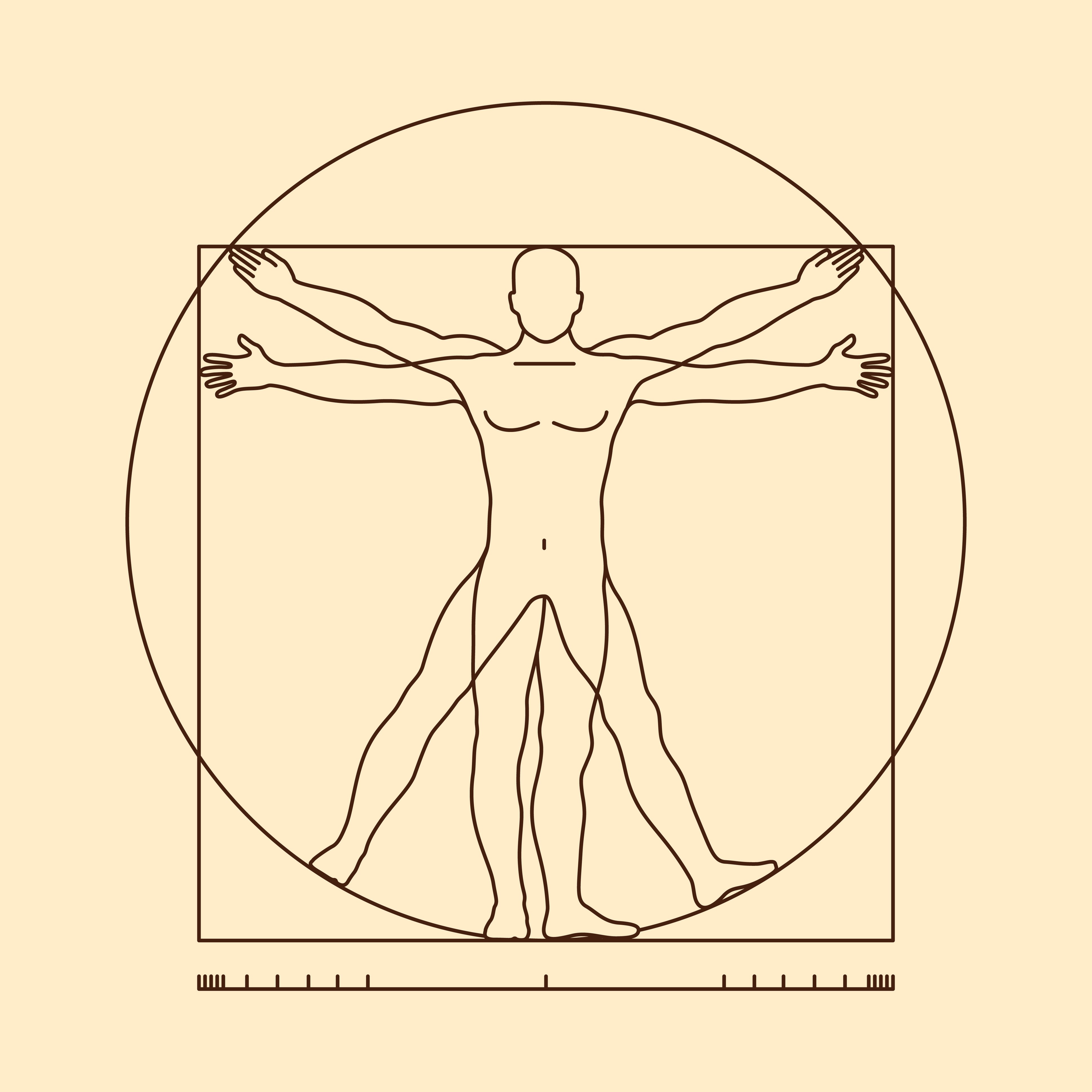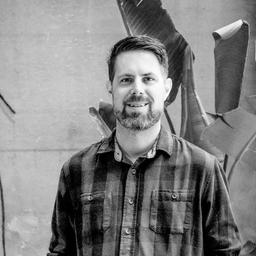
Designing for People
Sam Millin talks about the ways bar design is changing to promote human connection.

What is a bartender? According to the Oxford Dictionary: “Someone who makes and serves drinks from behind a bar.”
Technically true, but wildly incomplete.
Any working bartender knows that making and serving drinks is just the tip of the iceberg. The role demands a deep well of operational knowledge, physical precision, technical awareness, and a unique understanding of how people, products, and environments interact.
In this article, we’ll look at what makes a bar truly well designed, where to start, and where it so often goes wrong. Most importantly, we’ll highlight the role bartenders play; not just behind the bar, but at the design table where their expertise has the power to transform hospitality spaces.

Behind Bars is a design and build company that is dedicated to making bar stations of the highest functionality and quality for our clients around the world. We’renot a big company, we produce roughly 150 stations a year at the moment, and we are lucky enough to collaborate directly with some of the sharpest minds in hospitality; bartenders, operators, and innovators who are rethinking how service works, how spaces should flow, and how drinks can be delivered as part of a more complete guest experience.
The majority of our projects involve customising solutions together with our clients to specifically meet their operational needs. This allows us to constantly innovate and improve our stations, and to offersmart solutions to our next clients. From a design and a bartending perspective, it’s an incredibly exciting process to be a part of.
What we’re seeing is a global movement. More and more venues, from independent bars to major groups are turning to bartenders for design insight. When bartenders are included early in the process, the results are dramatic: more efficient service, more profitable layouts, and happier teams. The best part? This movement is just getting started.
Why is the design of the bars station important to the success of a venue?
At Behind Bars, we have a simple mantra: The design of the bar is the single most important decision for the front of house.
Every element—how many guests you can serve, how fast you can do it, how consistent your drinks are, how your team interacts with guests, how your guests experience the space—traces back to how well that station is thought out.
Capacity, configuration, service orientation, way finding—these aren’t just architectural details. They’re operational decisions involving strategic compromise. And they only work when the bar is treated as the functional core of the venue rather than an afterthought.
Where Do We Start when thinking about good design?
At Behind Bars, we start with constraints.
All projects big and small have constraints, be they time, budget, space or the technical limitations of a venue. All of these will have a bearing on the bar design. Once the constraints are understood, start to focus on the goals and expectations of the bar.
Revenue targets. Volume expectations. Concept clarity. Menu direction. What is it that you’re asking your bar to do within the constraints of the project. Be realistic. Don’t expect your 6ft long station to be able to serve 400 guests a menu of 50 cocktails. Rather, if you need to serve 400 guests in order to achieve your revenues targets, design accordingly.
Designing a high-volume beer hall is nothing like a 20-seat whisky bar, and neither should the equipment, layout, or workflow be. A bar is not just a bar.
Here are a few questions we ask early in every project:
The answers to these questions will provide you with vital information such as how many employees you will need during peak periods, all the way through to how much money you will need tied up on your back bar and in extra glassware. Information that is crucial at the beginning of the project.
Architects and builders can’t answer these questions on their own, this is not their area of expertise. And they shouldn’t have to. Just like a bartender wouldn’t wire the electrics or install the toilets, a contractor shouldn’t design the workflow of a venue. Collaboration is key and specialist knowledge is needed for a successful project and with this in mind, that specialist design knowledge for the bar comes from someone experienced working behind the bar.
Four stages of approaching Bar Design in a holistic way: Understand the bigger picture, then focus on the details.
1. The Bar as part of a broader technical project.
It’s vital to remember that the bar itself is part of a wider complex technical project, sometimes a tiny part of a huge project. A big problem, particularly on large projects (think casinos, stadiums, resorts or cruise ships), is that there are so many moving parts around plumbing, installation, electrics, ventilation, fire safety, interiors, various codes etc, that the operational part often gets skimmed over. As bar designers it’s crucial for us to be aware of these realities and be able to communicate and collaborate efficiently and effectively as part of a larger project team.
This is what we mean when we say: Understand the constraints of the project. They will have so much influence on the framework within which we can begin to design.
Understanding local health codes and a basic understanding of how water, drainage, electrics, data, draft beer etc must necessarily interact with the bar area are essential.
Understanding how installers such as plumbers, electricians and beer equipment supplier place their equipment on, in and around our stations, and thinking how to design accordingly is vital to well organised station.
A respect for interior architects and how their decorative materials and ideas work with the functionality of our bars is exciting to explore.
As a bartender every single shift is an opportunity to take notice of these things and begin to understand how technical constraints can impact on eventual design, layout and placement of a station.
Something to keep in mind; a successful project is for everyone's benefit and the most successful projects have well designed bars.
2. The Station: Comfortable, efficient and purposefully designed.
Let’s start by focussing where the work starts: with the bartender.
Bartending is fundamentally physical work. The faster and more comfortably a bartender can execute their routine—the dance, as we often call it—the better the service. The workflow is familiar: Glass – scoop – ice – jigger – bottle – pour – replace – rinse – garnish – serve.

We base our approach on human movement, using ergonomic principles to reduce strain and maximize speed. You might know it as the “one-step rule” or “working circle” approach—minimizing movement to maximize output.
Picture the Vitruvian Man, one of the most iconic images in art and science history. The Vitruvian man was named after the teachings of Marcus Vitruvius Pollio, the Roman architect, author, and engineer. My research also reveals he most likely gigged as a bartender on Friday and Saturday nights to put himself through university.
The Vitruvian man is useful because he allows us a popular reference to help us visualise a scope of human movement and begin to apply this to how a bartender works. This understanding is the starting point of designing an effective bar station.
The physical comfort in the range of human movement and how that specifically applies to the repetitive and minutely specific movements of bartending is where we at Behind Bars begin our design process. It’s where bartenders that we collaborate with start the process of understanding if the station we are creating will allow them to make and serve drinks in a comfortable and efficient range of movement. At this micro level, we’re not just making life easier for bartenders—we’re driving profitability through speed, consistency, and reduced turnover.
But the working station itself doesn’t operate in a vacuum. It needs a support infrastructure around it.
3. The Station Needs Support – thinking about the rest of the bar.
Even the best-designed station can’t carry a shift on its own. Support systems—glassware, storage, prep space, backup stock, POS, ice, waste management—all play a critical role in good bar design.
Here’s the minimum required just to make a drink:
But bartending is more than drink prep. It’s inventory, turnover, cleanliness, team dynamics, and technical coordination. So, designers must think beyond the box:
Every piece should be placed with intention. Without that, the bar might look good on paper —but it won’twork. Every time a decision is made to place a piece of equipment, we as designers need to be aware of what is not placed. Placing a freezer means we can’t place a fridge for example. We need to be very conscious of how the decisions we’re making are locking the venue into a specific way of serving. And once again, the people who know this best are the ones who live it, night after night: the bartenders.
4. The Bar is the heart and soul of the Front of House – Treat it as such.
Zooming out slightly again, let’s begin to examine the bar in a wider context: as the beating heart of a bigger whole, the Front of House.
The Front of House can be defined as every area that staff interacts with guests, and generally this is where the bar is, with the kitchen in the Back of House (although sometimes the front also). For a venue focussed on drinks, the bar becomes the very central element of that space. For restaurants, where perhaps the food is the main focus, the bar is still an absolutely essential operational element of that space.
Apart from providing the drinks for the venue, it is also a vital logistical hub for the interaction between the floor staff, who are collecting drinks to deliver to guests seated at tables, and the bartenders who are producing those drinks.
The dispense station of a bar (or the station that is specifically tasked with serving drink orders for guests seated away from the bar) is an oft overlooked element of bar design. Most venues have more seats away from the bar than at it, and the capacity of the dispense station needs to reflect that.
The best seat in the house is at the bar, design accordingly.
Sitting at the bar is great for bartenders, guests and ownership. This is for three reasons;
Check out the article ‘Designing for People’ for a deeper look at this.
The Core Problem: Not Enough Bartenders at the Design Table.
The most common issue we see—on projects big and small—is that bartenders and people with expert operational bar knowledge are brought in afterkey decisions have been made that will fundamentally affect the operational viability of a venue .
Consultants, dealers, F&B specialists, even ex-chefs (who absolutely bring value on the kitchen side) often dominate design conversations with little real experience behind the bar or their finger on the pulse of how bartending is changing and evolving.
The result? bars that look fine on paper, but have so much more potential.
I was recently on a call with a global consultant who said: “A sink, an ice well, a speed rail—basically a bar is a bar.”
As unbelievable as that might be to read, it’s a glimpse in to the sometimes dismissive attitude towards bar design that exists on hospitality projects and explains why so many of our clients are replacing relatively new bars with our equipment – clients are beginning to recognise that the process of bar design is crucial to their success on all levels.
The Future of Bar Design.
If you’re designing a bar, get someone with the knowledge of how a bar works at the table with the other experts.
This is about using the resources most venues and organisations have on hand to create a better, more successful output.
At Behind Bars we’re seeing more and more clients return to us to harness our specific bartender-centric knowledge and we urge all bartenders to approach their daily work with a broader perspective, thinking about the four stages of bar design and how their venue has approached these, and improvements they could make from the minute, bartender viewpoint, to the broader technical aspects of their venue.
The future of bar design is incredibly exciting and, as it evolves, and bartenders and their expert knowledge is at the centre of this evolution, venues and teams of all scopes and sizes will benefit.
Read more
Designing for People
Sam Millin talks about the ways bar design is changing to promote human connection.


